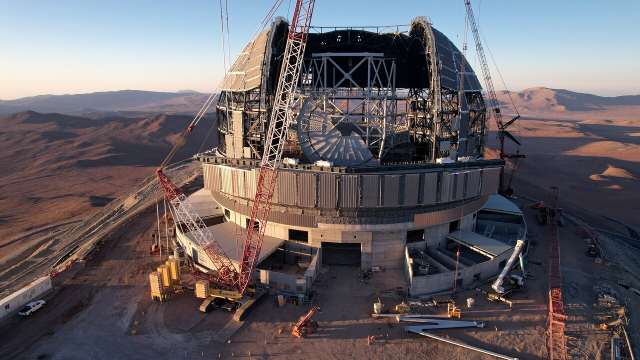Search
Items tagged with: Astrophysics
"How quantised inertia gets rid of dark matter | Mike McCulloch | TEDxPlymouthUniversity"
youtube.com/watch?v=fnNKC82wUm…
- YouTube
Enjoy the videos and music that you love, upload original content and share it all with friends, family and the world on YouTube.www.youtube.com

Ultra-low-noise Infrared Detectors for Exoplanet Imaging
One of the ultimate goals in astrophysics is the discovery of Earth-like planets that are capable of hosting life. While thousands of planets have beenNASA Science Editorial Team (NASA Science)

Hubble Captures a Cosmic Cloudscape
The universe is a dusty place, as this NASA/ESA Hubble Space Telescope image featuring swirling clouds of gas and dust near the Tarantula Nebula reveals.NASA Hubble Mission Team (NASA Science)

NASA’s SPHEREx Space Telescope Will Seek Life’s Ingredients - NASA
Where is all the water that may form oceans on distant planets and moons? The SPHEREx astrophysics mission will search the galaxy and take stock.Anthony Greicius (NASA)

Webb Maps Full Picture of How Phoenix Galaxy Cluster Forms Stars
Discovery proves decades-old theory of galaxy feeding cycle.NASA Webb Mission Team (NASA Science)

NASA Telescopes Deliver Stellar Bouquet in Time for Valentine's Day - NASA
A bouquet of thousands of stars in bloom has arrived. This composite image contains the deepest X-ray image ever made of the spectacular star forming regionNASA

Jeremy Schnittman: Looking Into the Mystery of Black Holes - NASA
Astrophysicist Jeremy Schnittman hopes to have one of his theories about black holes proven someday.Jessica Evans (NASA)

NASA Scientists Spot Candidate for Speediest Exoplanet System - NASA
Astronomers may have discovered a scrawny star bolting through the middle of our galaxy with a planet in tow. If confirmed, the pair sets a new record for theAshley Balzer (NASA)
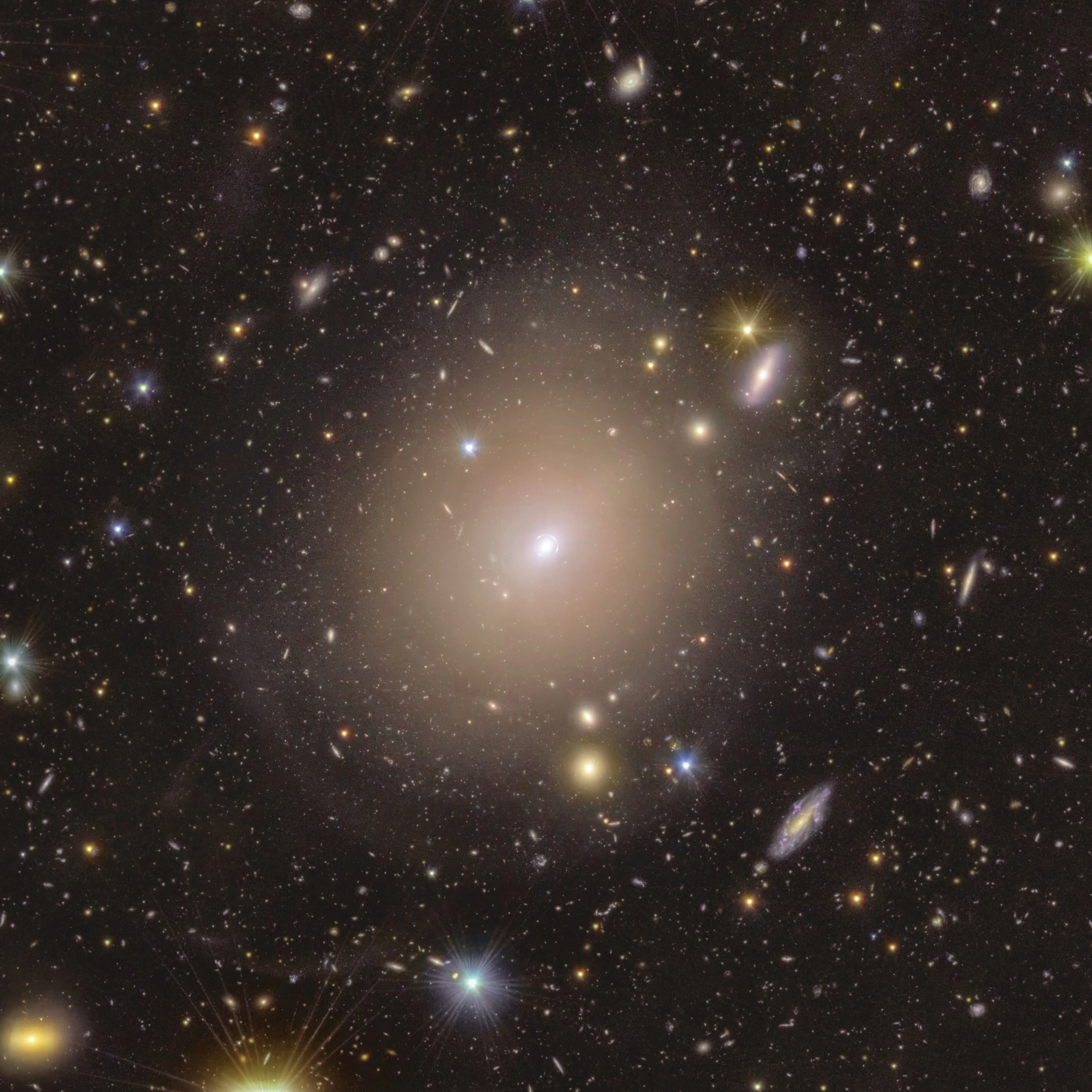
Euclid Discovers Einstein Ring in Our Cosmic Backyard - NASA
Euclid, an ESA (European Space Agency) mission with NASA contributions, has made a surprising discovery in our cosmic backyard: a phenomenon called anElizabeth R. Landau (NASA)
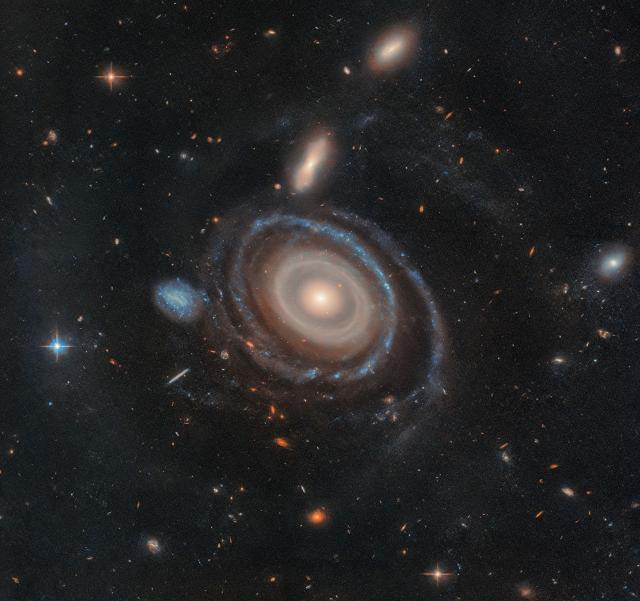
Straight Shot: Hubble Investigates Galaxy with Nine Rings
NASA’s Hubble Space Telescope has captured a cosmic bullseye! The gargantuan galaxy LEDA 1313424 is rippling with nine star-filled rings after an “arrow” — aNASA Hubble Mission Team (NASA Science)

Hubble Spots a Supernova
The subject of this NASA/ESA Hubble Space Telescope image is a supernova-hosting galaxy located about 600 million light-years away in the constellationNASA Hubble Mission Team (NASA Science)

Black Holes Can Cook for Themselves, Chandra Study Shows - NASA
Astronomers have taken a crucial step in showing that the most massive black holes in the universe can create their own meals. Data from NASA’s Chandra X-rayNASA

Black Holes Can Cook for Themselves, Chandra Study Shows - NASA
Astronomers have taken a crucial step in showing that the most massive black holes in the universe can create their own meals. Data from NASA’s Chandra X-rayNASA

NASA Scientists, Engineers Receive Presidential Early Career Awards - NASA
President Biden has named 19 researchers who contribute to NASA’s mission as recipients of the Presidential Early Career Award for Scientists and EngineersElizabeth R. Landau (NASA)
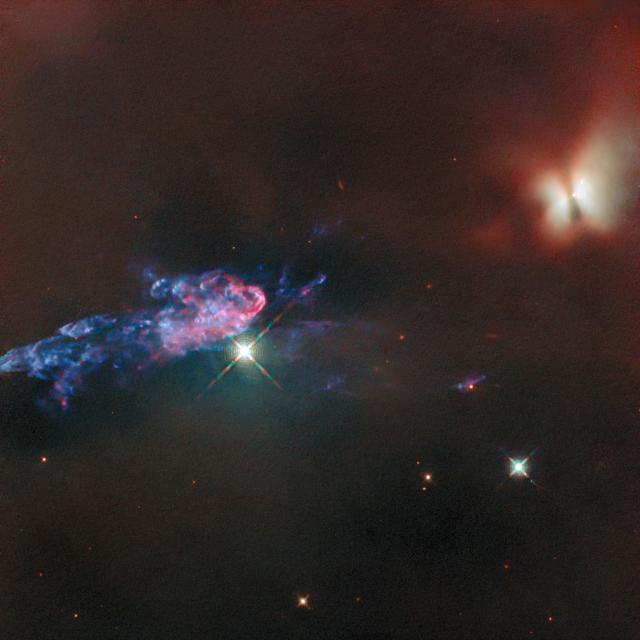
Hubble Captures Young Stars Changing Their Environments - NASA Science
This NASA/ESA Hubble Space Telescope image peers into the dusty recesses of the nearest massive star-forming region to Earth, the Orion Nebula (Messier 42, M42).science.nasa.gov
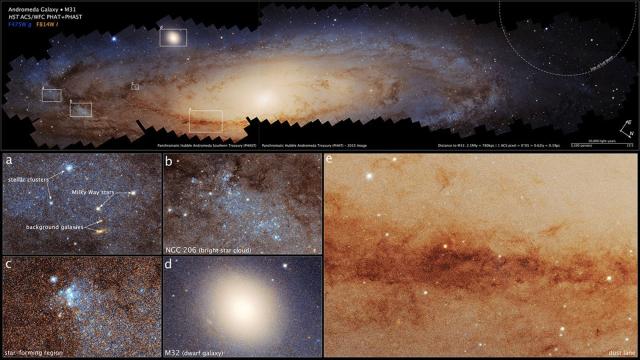
NASA's Hubble Traces Hidden History of Andromeda Galaxy - NASA Science
In the years following the launch of NASA’s Hubble Space Telescope, astronomers have tallied over 1 trillion galaxies in the universe.science.nasa.gov

NASA’s Pandora Mission One Step Closer To Probing Alien Atmospheres - NASA Science
Pandora, NASA’s newest exoplanet mission, is one step closer to launch with the completion of the spacecraft bus, which provides the structure, power, and other systems that will enable the mission to carry out its work.science.nasa.gov

NASA’s Webb Reveals Intricate Layers of Interstellar Dust, Gas - NASA Science
Once upon a time, the core of a massive star collapsed, creating a shockwave that blasted outward, ripping the star apart as it went.science.nasa.gov
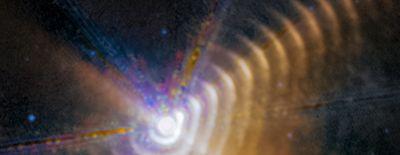
Webb Watches Carbon-Rich Dust Shells Form, Expand in Star System - NASA Science
Astronomers have long tried to track down how elements like carbon, which is essential for life, become widely distributed across the universe.science.nasa.gov

Newfound Galaxy Class May Indicate Early Black Hole Growth, Webb Finds - NASA Science
In December 2022, less than six months after commencing science operations, NASA’s James Webb Space Telescope revealed something never seen before: numerous red objects that appear small on the sky, which scientists soon called “little red dots” (LRD…science.nasa.gov

New Simulated Universe Previews Panoramas From NASA’s Roman Telescope - NASA
Astronomers have released a set of more than a million simulated images showcasing the cosmos as NASA’s upcoming Nancy Grace Roman Space Telescope will seeAshley Balzer (NASA)
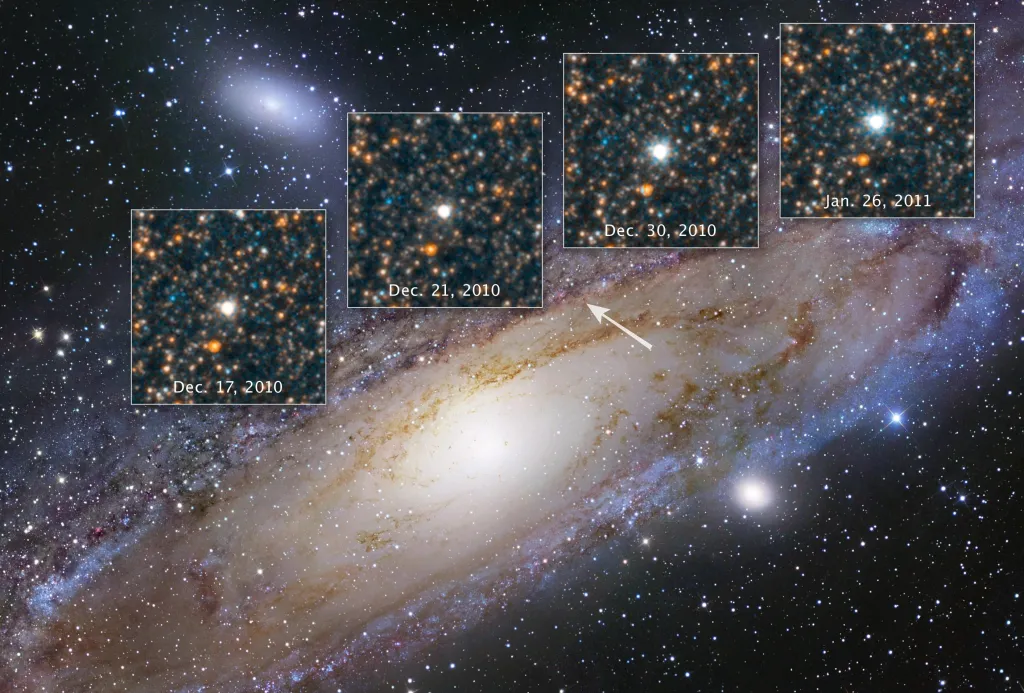
NASA Celebrates Edwin Hubble's Discovery of a New Universe - NASA Science
For humans, the most important star in the universe is our Sun. The second-most important star is nestled inside the Andromeda galaxy. Don’t go looking for it — the flickering star is 2.science.nasa.gov
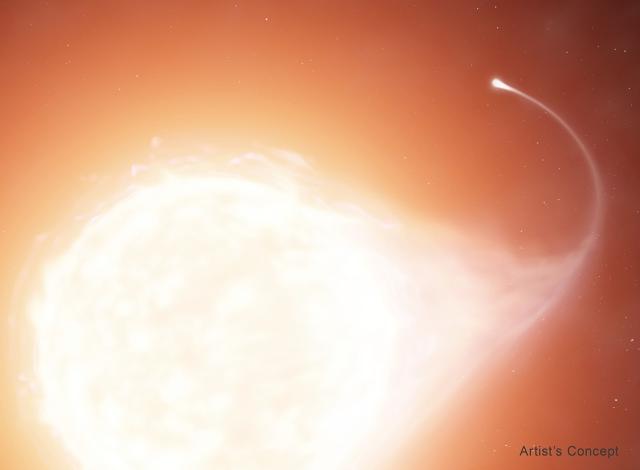
NASA's Hubble Tracks Down a 'Blue Lurker' Among Stars - NASA Science
The name “blue lurker” might sound like a villainous character from a superhero movie. But it is a rare class of star that NASA’s Hubble Space Telescope explored by looking deeply into the open star cluster M67, roughly 2,800 light-years away.science.nasa.gov

Astronomers Catch Unprecedented Features at Brink of Active Black Hole - NASA Science
International teams of astronomers monitoring a supermassive black hole in the heart of a distant galaxy have detected features never seen before using data from NASA missions and other facilities.science.nasa.gov
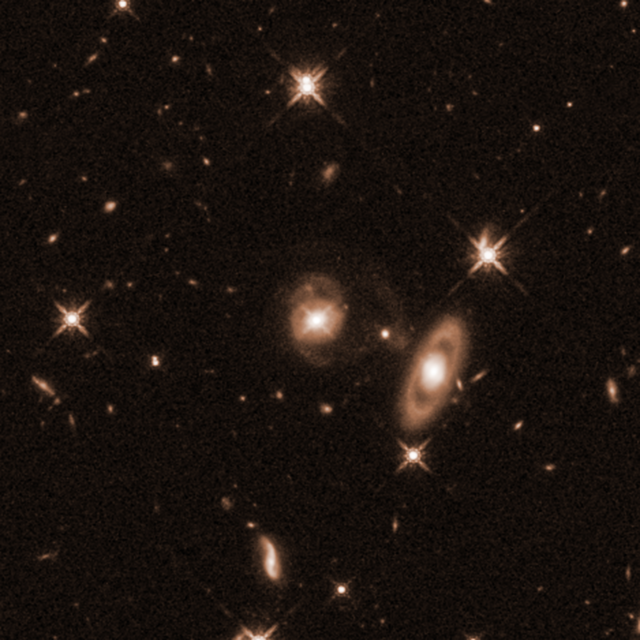
Hubble Reveals Surprising Spiral Shape of Galaxy Hosting Young Jet - NASA Science
The night sky has always played a crucial role in navigation, from early ocean crossings to modern GPS. Besides stars, the United States Navy uses quasars as beacons.science.nasa.gov

How Many Black Holes Are Hiding? NASA Study Homes in on Answer - NASA
An effort to find some of the biggest, most active black holes in the universe provides a better estimate for the ratio of hidden to unhidden behemoths.Anthony Greicius (NASA)
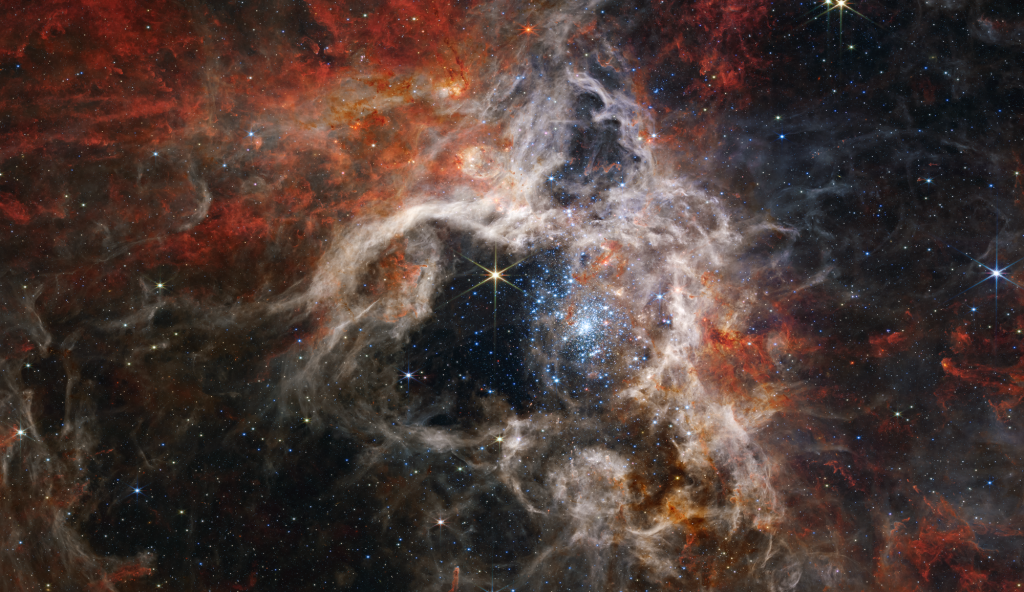
NASA Research To Be Featured at American Astronomical Society Meeting - NASA Science
From new perspectives on the early universe to illuminating the extreme environment near a black hole, discoveries from NASA missions will be highlighted at the 245th meeting of the American Astronomical Society (AAS).science.nasa.gov

Hubble Rings In the New Year - NASA Science
This NASA/ESA Hubble Space Telescope image reveals a tiny patch of sky in the constellation Hydra. The stars and galaxies depicted here span a mind-bending range of distances.science.nasa.gov

Astronaut Set to Patch NASA’s X-ray Telescope Aboard Space Station - NASA Science
NASA astronaut Nick Hague will install patches to the agency’s NICER (Neutron star Interior Composition Explorer) X-ray telescope on the International Space Station as part of a spacewalk scheduled for Jan. 16.science.nasa.gov

Astronomy Activation Ambassadors: A New Era - NASA Science
The NASA Science Activation Program’s Astronomy Activation Ambassadors (AAA) project aims to measurably enhance student Science, Technology, Engineering, and Mathematics (STEM) engagement via middle school, high school, and community college science …science.nasa.gov
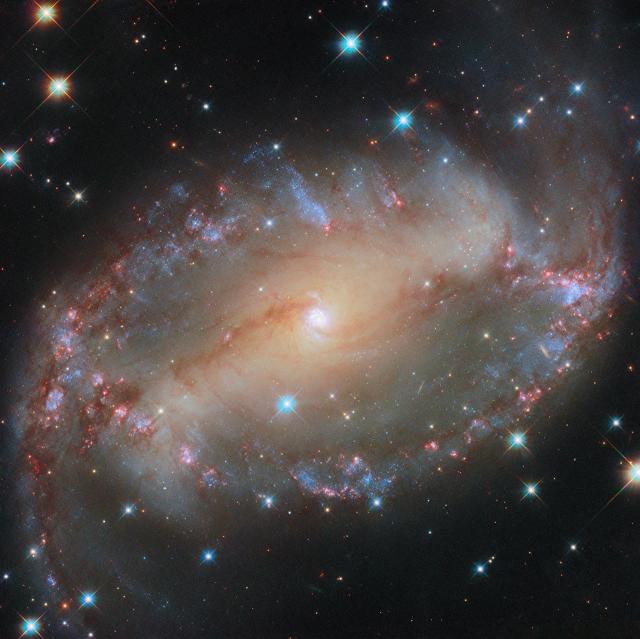
Hubble Spies a Cosmic Eye - NASA Science
This NASA/ESA Hubble Space Telescope image features the spiral galaxy NGC 2566, which sits 76 million light-years away in the constellation Puppis.science.nasa.gov

NASA Finds ‘Sideways’ Black Hole Using Legacy Data, New Techniques - NASA
NASA researchers have discovered a perplexing case of a black hole that appears to be “tipped over,” rotating in an unexpected direction relative to theAbby Tabor (NASA)

Very Cold Detectors Reveal the Very Hot Universe and Kick Off a New Era in X-ray Astronomy - NASA Science
X-rays are radiated by matter hotter than one million Kelvin, and high-resolution X-ray spectroscopy can tell us about the composition of the matter and how fast and in what direction it is moving.science.nasa.gov

NASA Missions Spot Cosmic 'Wreath' Displaying Stellar Circle of Life - NASA
Since antiquity, wreaths have symbolized the cycle of life, death, and rebirth. It is fitting then that one of the best places for astronomers to learn more about the stellar lifecycle resembles a giant holiday wreath itself.NASA
#Introduction Hi #fediverse ! We’re the European Southern Observatory, and we design, build and operate ground-based telescopes.
One of them is our Extremely Large Telescope, currently under construction in #Chile. It will have a 39 m mirror, and its rotating enclosure will weigh 6100 tonnes, or about 700 mastodons!
We’re looking forward to chatting with all of you about #astronomy
📷 ESO/G. Vecchia
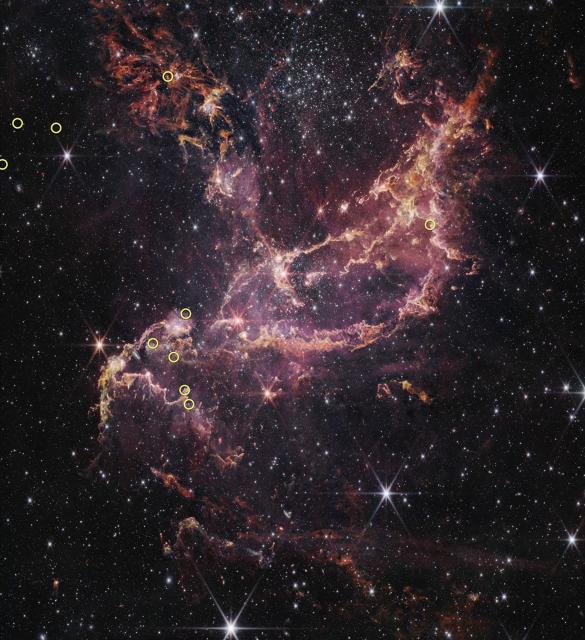
NASA’s Webb Finds Planet-Forming Disks Lived Longer in Early Universe - NASA Science
NASA’s James Webb Space Telescope just solved a conundrum by proving a controversial finding made with the agency’s Hubble Space Telescope more than 20 years ago.science.nasa.gov
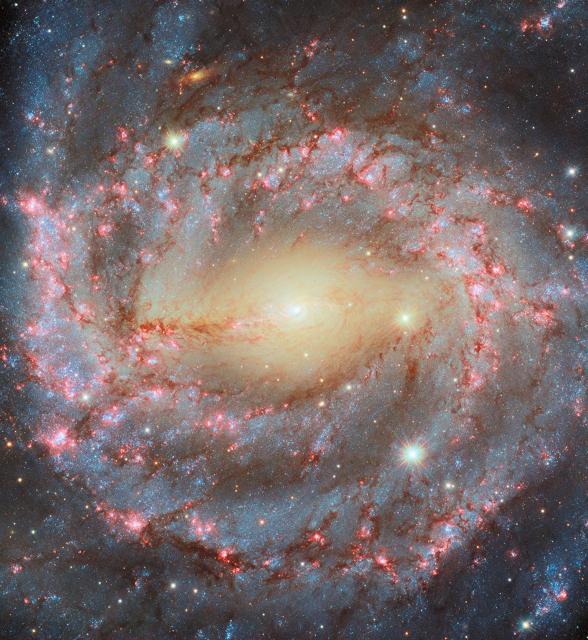
Hubble Images a Grand Spiral - NASA Science
This NASA/ESA Hubble Space Telescope image features the glorious spiral galaxy NGC 5643, which is located roughly 40 million light-years away in the constellation Lupus, the Wolf.science.nasa.gov

Found: First Actively Forming Galaxy as Lightweight as Young Milky Way - NASA Science
For the first time, NASA’s James Webb Space Telescope has detected and “weighed” a galaxy that not only existed around 600 million years after the big bang, but is also similar to what our Milky Way galaxy’s mass might have been at the same stage of …science.nasa.gov

Black Hole Jet Stumbles Into Something in the Dark - NASA
Even matter ejected by black holes can run into objects in the dark. Using NASA’s Chandra X-ray Observatory, astronomers have found an unusual mark from aNASA


